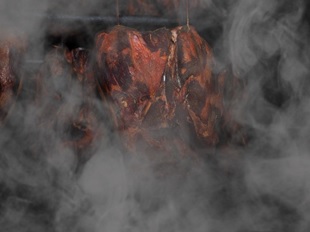When Measuring Meat Temperatures Matters
Veröffentlicht November 02, 2016 von Advanced Energy Editor

The U.S. meat processing industry is extensively regulated to ensure quality production and safe consumption. It is the responsibility of the food manufacturer to monitor production and maintain safe temperatures throughout the process. If the manufacturer does not comply with the USDA’s Food Safety Modernization Act and other local, state and federal regulations, actions may be taken to remove the meat products from the market. Three typical production scenarios in the meat processing supply chain illustrate the importance of temperature monitoring.
Packaging in the Slaughterhouse
When packaging meat, the temperature must remain below freezing in order to make the journey to the processing plant safely. Meat leaving the slaughterhouse for processing is typically packaged in combo boxes or bins that measure four square feet. Quality technicians will measure the core temperature at the center of the bin prior to shipment, then once again when it arrives at the processing plant.
Processed Meats on the Production Line
On a continuous production line for processed meats, the temperature must be maintained during the entire routine and meet explicit USDA specifications. Depending on the specific process step, it is imperative to measure the meat’s core temperature. Acceptable temperatures range from lows of 32°F to highs of 160°F. The speed of measurement is critical due to the speed of the automated production line. QC technicians have a limited “window of opportunity” of roughly 10-15 seconds to insert a probe and obtain a stable and accurate reading before the meat moves on to the next step.
The Meat Smoking Process
During the meat smoking process, a common production step for many processed meats, the temperature must be closely monitored. Just as on the continuous production line, speed of measurement is critical. QC technicians must open the oven doors, take numerous measurements, record the results and shut the doors as quickly and efficiently as possible. When the oven doors are open, heat escapes and increases the total cooking time.
Advanced Energy's TEGAM designs and manufactures temperature measurement instruments for safe food manufacturing and production. View our thermometry categories here. Please contact us for questions or sales inquiries on our numerous food safety thermometry products.
